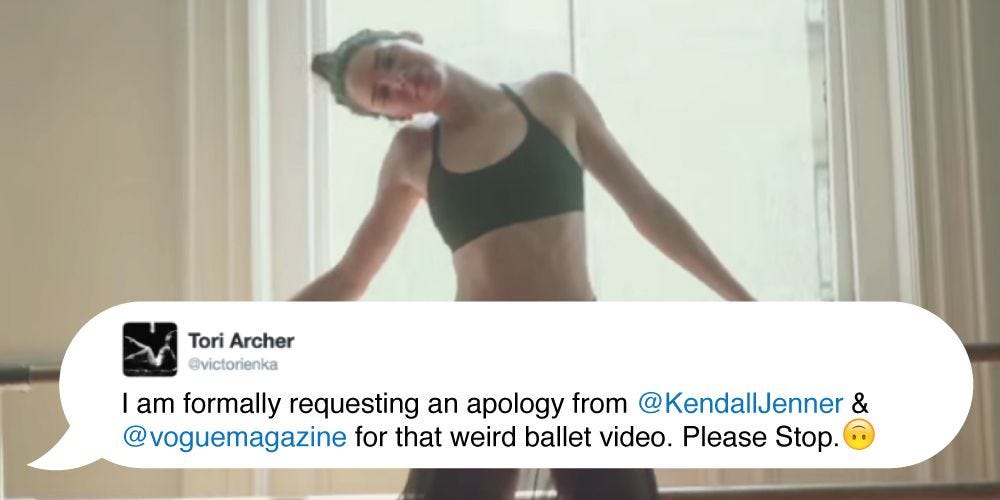Yesterday, Emily Sundberg—whose innately Substackian fame renders her one of the platform’s biggest figures—posted a scoop that New York Magazine is joining Substack. This was part of a list of other legacy media entities who are starting advice columns or newsletters, growing their brands through what are, essentially, bloggers-for-hire: “Fewer people are reading homepages. Fewer people are typing in URLs. Nobody really reads print magazines. What they do read is newsletters… A well-executed newsletter isn’t just a marketing or traffic-defining tool anymore. It’s a brand defining product.” All true. My boyfriend sent me this post and asked what I thought it was New York Magazine (and, if Sundberg’s implications come to fruition, The WSJ and The Times) hopes to accomplish on Substack. My answer: the same thing brands hoped to achieve with Twitter accounts in 2010.
As Sundberg’s post suggests, newsletters are a clear successor to non-academic writing as legacy media continues to flounder, gaining traction as publics become more accustomed to an entirely grift-based culture and economy. Substack is the premier place for this because of its sleek integration of the form and function of “posting”—the foundation of all contemporary vernacular—with a shiny veneer of legacy media—design email banners and work on your SEO! Here, it is easy to be an influencer as a millennial who would rather type than film themselves talking, playing professional writer (or adding on to an existing writing career) while managing their own subscription base.1 It is totally new in its curation of huge documents, user-base, and relative normalcy of the people in charge (from New Zealand, not Jack Dorsey), but it also borrows from every other “online platform” that has ever existed.
Substack is also a business that makes money. While white nationalists should not be allowed to do anything, at all, for example, I think we might have bigger fish to fry in the form of actual, editorial media companies who purportedly hate the Orange Cheeto in Chief President, etc. not allowing any accurate reporting on genocide. Putting ideological responsibility on A COMPANY that is not even a company with one journalistic or editorial ethos is, to me, like plugging your ears with your fingers and talking to a brick wall. We wouldn’t be doing this, at all, if we could make living wages writing where more people would see it without being overworked or censored. We can and should be critical of these technocratic prisons, but we don’t need to get hysterical about the one-millionth step in a process of individualist economy.
On another note: I am rattled by Substack users’ complete disavowal of the app’s addition of short-form video. It disturbs me, really, that someone can be so bored—their sense of self as part of a collective so utterly dependent on a prospect that Substack could, in some false, utopian reality, become a subaltern, digital publishing house; so unable to resist temptation of scrolling like “the masses” they think they tower above—that the website adding a TikTok tab upsets them even a little bit. This is a social media website that, in order to grow or make any of us any money, must adapt to influencing form and economy. An onslaught of short videos is bad for your brain, I’m sure, and has made people less willing to engage in the meditative perception of “watching a movie” or “reading a book.” So, you don’t have to make them yourself, or even really watch them that much, but we are never going to unwrinkle the can: short-form video is the way culture is. We can work with that and think creatively about how it is part of a condition, rather than a dooming poison or naturalized default, but we can’t just go to a different website and pretend it isn’t chasing us. Do you understand what blogging is, or that it was the original online social medium?

The only comment about the NY Mag scoop on Sundberg’s post echo my boyfriend’s reaction: “seems very weird… potentially a real sea change,” to which Sundberg responds, “depends on how much the personalities behind the letter decide to pop off.” I think this is about right. How will legacy media’s bottom line change when bloggers are producing their product? If businesses having to do with intellectual culture, journalism, or criticism feel such an obvious need to incorporate blogging as, in Sundberg’s words, a “brand-defining product,” that means blogging is an innate part of the world, too, like short-form video. That’s a good sign, I think, for the future of the written word, and for young peoples’ willingness to engage with it. But it seems kind of bad for legacy media, because, as Substack’s explosion indicates, newsletter-writing relies on off-the-cuff, influencer-inspired style that companies designed for mass consumption cannot accommodate. Brands posting like people elsewhere never really took off.

When I go to the NYT “DealBook Newsletter,” I don’t understand what it is, because it just looks like a subsection of The New York Times. New York Mag is right to join Substack, because its output there will follow the legible and user-friendly paywalls enforced by this platform I understand, rather than rules built for only for their own website. But if they properly compensate the people writing and posting there, then those posts will just look like posts by writers on Substack, and, popular Substack posts are pretty particular in style and form. So, while Substack is similar to most other social media platforms in a lot of ways, its investment in the accessibility of “playing or criticizing writer/intellectual” puts it fundamentally at odds with being a ticket to tapped-in branding. Yet, if businesses don’t make the effort, they will continue to fall out of fashion: just like Substack would if they didn’t introduce video.
I’m not sure, exactly, what Ziwe does on Substack, and in fact did not even know she was here until I saw this post:
Most of the stuff that goes viral on here I don’t understand, like another hit from a few weeks ago that read like first-pass, conversational thoughts about Addison Rae by someone who just learned who that was last year. But this Ziwe note was hitting, and that’s not to say those posts are bad, they’re just not fully formed. That’s fine when it’s a one-off, 9-word “note,” but not so much when the output is framed as an intellectually serious intervention.
Around the same time of these posts, mine about Coachella was getting lampooned in threads and comments by by 5ish people2 telling me I didn’t understand how charts worked or how famous Olivia Rodrigo is. I stand by that post and how it attempts to address a rift between online and offline fame and marketability, but some of the peanut gallery was totally right: I wrote that the day before I posted it in, like, an hour. It’s long and I’m sure there are typos, let alone mistakes in the structure and clarity—I was doubtful it would make sense to anyone but my regular readership, and was surprised when it went kind of viral (by Substack standards). In fact, I wish something I put more effort into would go viral, instead, but I always find the most off-the-cuff Substack posts get me the most attention. That really sounds a lot like other apps I know.
For the most part, no one reads anything I post here before it goes live, except me. As someone who is a writing instructor to college and grad students with a pseudo writing career in a different industry, I’ll tell you that that’s not writing. It’s posting.
Posting is a totally legitimate style, medium, or genre (whatever makes you happiest), but editing and collaboration are parts of actual writing, not steps you can skip. Substack makes me a better writer, and I like it because it puts process on display and forces you to be fast and diligent at self-editing. Yet, we can play writers on here until the cows come home, but until we receive critical readers or have the time and energy to hire editors or volunteer some sort of free collaboration, all we are is posters, albeit of a new style/medium/genre that incorporates research and long-form writing.
The biggest, most important lesson I’ve learned as a writer is that first drafts are universally, always bad. For something to be “good writing,” you have to think about it and triple check that you can comfortably defend every single thing you say to anyone on the earth who might read it. You have to pick it up and put it down tens if not hundreds of times to shake out the organization. Other people have to look at it, and you have to learn when to know their criticisms and questions are valid and when they are dumb or just not applicable. Getting rejected is part of it, deleting is part of it, and so is moving on.
My academic publications went through at least three rounds of editing and workshopping with colleagues and mentors before they even went out for peer review. I think peer review, especially of the blind variety, are structurally inequitable and bad, but amongst comments like “I wish this were an entirely different article” they have always given me useful feedback. Read anyone who has ever talked about writing throughout the history of mankind, and they will probably agree that writing for readers, i.e. not in your journal, is as emotionally frustrating or logistically annoying as it is creatively fulfilling. Even just talking about your writing helps, but a blank page is a mutable soup that leaves you completely unprotected from valid criticisms of your craft or character, if you aren’t good enough at writing a shield. I find the confidence with which Substackers attempt to evade this annoying, and brands’ attempt to cash in on the conventions it breeds unsustainable.
While all my Substack posts are bound to have typos, to be under-baked and weird and easy to poke holes in, I try to always mitigate that by only writing about things I am comfortable writing about. It would be completely inappropriate, for example, for me to write about video games. I play them very rarely and have the most gestural understanding of their history and accompanying culture, most of which I have metabolized from ex boyfriends. I have my hand on the glass of the Kojima party, wishing I understood how these cinematic “games” came to pass, and how much they are “games” vs. movies or, something, but I can’t—I don’t have the institutional knowledge, intellectual investments, or informed enough insight that could possibly make that unique.
I think that these considerations are a skill Substackers could bring to long-form writing that professional short-form video makers couldn’t, and yet: they don’t. There is a culture on here that rewards a formal and stylistic posting ethos—saying whatever—drawn out into article-length ideas, which also seeks to punish actual intellectual rigor. Even if an opinion is valid or unique doesn’t mean it’s been considered enough to be co-signed or lambasted by hundreds of people. We should be able to comfortably comment on each other’s posts, “what are you talking about”3 or “yay!” and receive some sort of meaningful dialogue, “like, oh, okay, I see what you’re saying, sure.” Instead, everyone, including myself, has to stand by their blogposts as if they have an editor or even a real income stream, but only get mad if the app adds video. I don’t want to do any of this. I don’t want to pretend your half-assed writing about Addison Rae or mine about Coachella is good, and I also don’t want to talk about how it’s bad. These are posts: here one day, gone the next. We all know we’re not trying very hard on here, and we all SHOULD all be adults.4 It’s ok to be honest.
Unless you’re Emily Sundberg, you probably don’t have an editor or real income stream on Substack. And, to be fair, there is plenty of meaningful dialogue to be had here, or I wouldn’t stay. But it is social media—even in the comments section of a serious post—which is why legacy media wants in. That’s not inherently bad or evil, though, and could ultimately be why those companies fail at it: this platform’s marriage of criticism, curation, and absolutely stupid, influencer-inspired posting is not amenable to advertiser-friendly brands who rely on mass appeal. Substack writers are individual people with the most niche followings possible, which is why people pay them money. Once a company starts imitating them, or the writers start to imitate company writing, is when there are problems.

You’re talking to someone who is, right now, writing and posting on Substack. This is what we all are doing—get real!
Goes to show the real scale and rigor of thought on here, kind of.
Instead of what I get, which are passive aggressive sub-restacks by children canceling me for saying I didn’t like living in Chicago. I don’t know why Substack users think I can’t see comments (that call me “the author,” like, I have notifications turned on) or posts about me, or why they think I won’t bite back. It’s like if Twitter were remade in 2025 but no one on it had ever heard of or used Twitter before.
I put a lot of effort into my Substack and care very much about it. But there’s only so much I can put into this when it is not my big girl job.






once a month I get an insane email about having a typo in something
This is exactly why I'm just writing about Pixar - it's something my readers can actually trust me on. I'm not suddenly going to pretend I know what I'm talking about with regards to "Addison Rae"